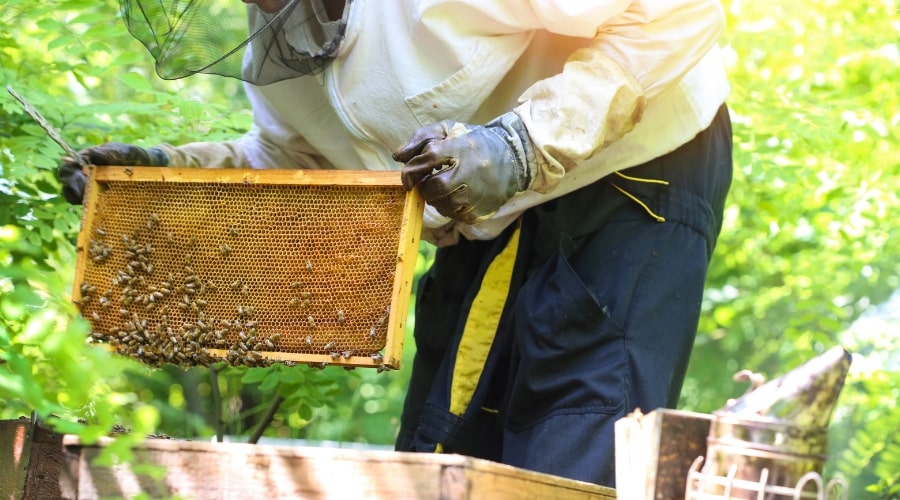Keeping your bees alive through winter requires careful feeding strategies. Bees need energy to survive cold months, and natural food sources are scarce during this time. Providing the right nutrition can make the difference between losing or saving a hive.
Assessing the Hive’s Needs
Begin by checking your hive’s food reserves in late fall. A healthy hive needs about 40 to 60 pounds of stored honey to survive winter [TO BE VERIFIED]. Inspect the hive carefully without disturbing the cluster.
Look for capped honey in the frames. If reserves are low, you’ll need to supplement their diet. Keep in mind that bees consume more food in colder winters.
Feeding Options for Winter
There are several ways to feed your bees during winter. Choose the method that works best for your climate and hive conditions:
-
Sugar Syrup: Provide a 2:1 sugar-to-water mixture. This option is best in late fall before temperatures drop. Avoid this method once the temperature falls below 50°F.
-
Sugar Bricks or Fondant: These solid feeding options work well during cold weather. Place them directly above the cluster to ensure access.
-
Candy Boards: A candy board is a prepared mix of sugar and water poured into a shallow tray. It hardens into a solid block that bees can access throughout winter.
-
Dry Sugar: Sprinkle dry granulated sugar on a sheet of newspaper placed above the frames. This emergency method helps if you notice food running low mid-winter.
Setting Up the Feed
Place the food as close to the cluster as possible. Bees cannot move far in cold weather, so accessibility is crucial. Use an inner feeder or place sugar bricks on the top bars of the frames.
Ensure proper ventilation to prevent moisture buildup. Moisture in the hive can drip onto the bees, making them cold and more susceptible to disease. Adding an insulated cover or moisture-absorbing materials helps.
Monitoring Through Winter
Check the hive periodically during winter. Avoid opening it fully, as this can disrupt the cluster and let in cold air. Use a stethoscope or thermal camera to confirm the bees are alive and active.
If you notice signs of starvation, such as dead bees near the cluster, add more food immediately. Always handle the hive gently to avoid disturbing the bees.
Avoiding Common Mistakes
-
Feeding Too Late: Begin supplemental feeding before the bees exhaust their stores. Late feeding may not save the colony.
-
Overfeeding: Excess food can create moisture problems. Provide just enough to sustain the hive.
-
Ignoring Ventilation: A poorly ventilated hive increases the risk of condensation. This can be more dangerous than cold temperatures alone.
Final Tips
Preparing your hive early and feeding consistently gives your bees the energy to survive winter. Stay attentive to their needs and adjust feeding methods as necessary. By taking these steps, you’ll help ensure your hive’s survival until spring.


